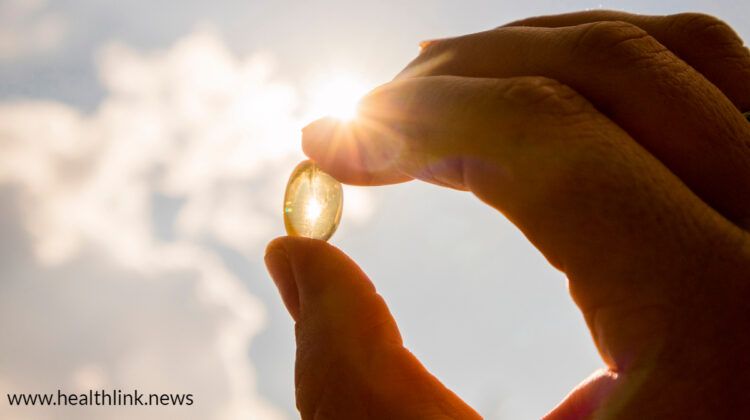Why Should We take Vitamin D from the Sun?

Vitamins are the most essential components in the human body. Experts say that vitamins, particularly vitamin D, a fat-soluble vitamin of the classes of vitamins- D1, D2, D3, is one of the most vital components to have in your body for maintaining an overall nutrition profile, a healthy physique and also to regulate the proper functioning of your body. Many individuals are found to suffer from a deficiency of vitamin D because their bodies are unable to absorb enough of the nutrient from the foods they eat in their regular diet. Deficiency of the key vitamins like vitamin D in your body can cause severe disorders like osteoporosis, osteoarthritis or weak bones, osteomalacia or soft bones, and several other bone related problems, mainly among aged individuals, and can even cause rickets among children. Optimum levels of vitamin D in your body will maintain your overall health and will fight harmful disorders like depression, chronic disorders, promotes weight loss, and improves the circulatory system of your body.
Vitamin D From Sun
The rays of the sun are believed to be one of the prime sources of vitamin D that your body can effectively absorb. Experts say that it is important to expose at least one-third of your skin to the sun’s rays for around ten to thirty minutes. Vitamin D in your body gets produced from the fats and cholesterols present in your skin. The suggested duration of exposure is permissible for people with lighter skin tones but people with deeper skin tones will require long hours of exposure. Vitamin D is absolutely important in your body as it performs a good number of essential roles like:(1)
- Helps your body to effectively absorb essential minerals like calcium and phosphorus for normal bone growth and development and for providing muscle strength
- Regulates the strengthening of your immune system by improving metabolism and building resistance against harmful diseases and by checking oxidative functions of disease causing free radicals.
But one must keep in mind that you need to protect your body from burning, which is possible after prolonged exposure to sun rays. So as a remedy you can apply oil-free sunscreens, depending on your skin type and skin sensitivity before exposing your body to the sun. But it is advisable to avoid sunscreen for the first thirty minutes and then apply it when you feel that your skin is getting burnt or tanned. It is also important to cover up your face and eyes from the harmful UV rays of the sun. So you can always put on your sunglasses and hat when you are going out for sun exposure.
Though Vitamin D can be obtained from several foods like cod liver oil, swordfish, salmon, canned tuna, beef liver, egg yolks, sardines, and many other foods you have in your diet, your body is often unable to absorb the entirety of it into your bloodstream. Whereas, vitamin D is naturally produced in your body in response to the sun rays, when your body parts like skin get exposed to the sunlight.
The Sun: Source of High-Quality Vitamin D
Sun rays are considered one of the most vital sources of vitamins in your body. In fact, getting exposed to sunlight is the most effective way to produce vitamin D in your body naturally from the cholesterol in your skin, without consuming any additional vitamin D supplements. The mechanism by which vitamin D is produced in the body is that the ultraviolet B (UVB) rays of the sun react with the cholesterol and lipoproteins in your skin tissues (2).
Moreover, vitamin D enables the absorption of essential nutrients from the foods in your regular diet and causes your body cells in the small intestine to absorb vital minerals like calcium and phosphorus that are required for the healthy growth and the development of strong bones. Apart from these, vitamin D is also known to cure the following disorders:(3)
- Osteoporosis
- Muscle weakness
- Cancer
- Depression
- Death
But one thing should be noted that the UVB rays of the sun, particularly the one responsible for the production of vitamin D cannot penetrate through glasses of windows. So you need to go out to the sun to get your body exposed to the sun rays.
When To Get Exposed to Sun to Obtain Vitamin D?
There is a specific time, that is midday or afternoon when you can get exposed to a maximum number of high-quality sunrays. During noon or midday, the sun is in the middle of the sky and so you can enjoy powerful sun rays that will not only be comforting for your body but will also lead to better production of vitamin D in your body (4).
Vitamin D Production and Your Skin Tone:
Your skin contains a particular pigment called melanin that is responsible for obtaining the color of your skin. Researchers have concluded that if you have higher amounts of melanin in your body, your skin tone will be darker. Sun rays contain extracts that promote the growth of melanin in your body and thus make your skin tone a bit darker, compared to people who lack the melanin pigment and have lighter skin(5).
Expose More Skin for Better Production Of Vitamin D
Recent studies have found that the more you expose your skin to the sun rays you are likely to produce more levels of natural vitamin D in your body. So it is important to expose maximum portions of your body to the sun rays to promote better production of vitamin D.
Will Your Sunscreen Affect Vitamin D?
It is absolutely important to cover up your skin with sunscreens to avoid sunburns or skin cancer after prolonged exposure to sun rays. But it is always advisable to apply it after 10 to 30 minutes of exposure to scorching sunlight. Moreover, some sunscreens might consist of harmful chemicals that may scatter sunlight and affect vitamin D production (6).
High Exposure to Sun Can Be Troublesome
Exposure to sunlight for quite some time is always recommended to help the production of vitamin D in your body. But the ultraviolet and infrared rays of the sun are harmful to your body and skin, so too much exposure to sun rays can often cause serious troubles. Some of these are listed below:
- Sunburns: Too much exposure to sunlight can cause sunburn and can eventually lead to redness, swelling, pain or tenderness and blisters.
- Eye damage: Sun rays contain high amounts of harmful ultraviolet rays that can cause severe eye damage if your eyes are not properly protected during long exposure to sun rays and can cause disorders like cataracts and macular degenerations.
- Aging skin: Some recent studies have found that prolonged exposure to sunlight can make your skin wrinkled and saggy, and thus leads to faster aging of your skin.
- Skin damages: Heavy exposure to scorch sun heat can lead to several skin damages like development of freckles, moles and other skin changes.
- Sun stroke: When your body remains too much exposed to sun rays, the inner temperature of your body gradually increases and leads to lethal conditions like sun stroke or heat stroke.
- Skin cancer: The harmful ultraviolet rays of the sun can potentially damage your skin and will eventually lead to skin cancer if your skin remains exposed to sun for a prolonged period of time.
The Bottom Line: You can safely expose your skin to the sunlight to support vitamin D production in your body, but you should also keep in mind that the exposure should not take up prolonged hours, which can subsequently lead to adverse health effects. If you think that your body’s exposure to the sunlight will take a longer time, you should apply the sunscreen suitable to your skin after thirty minutes of exposure and cover your head and eyes with a hat and sunglasses.
